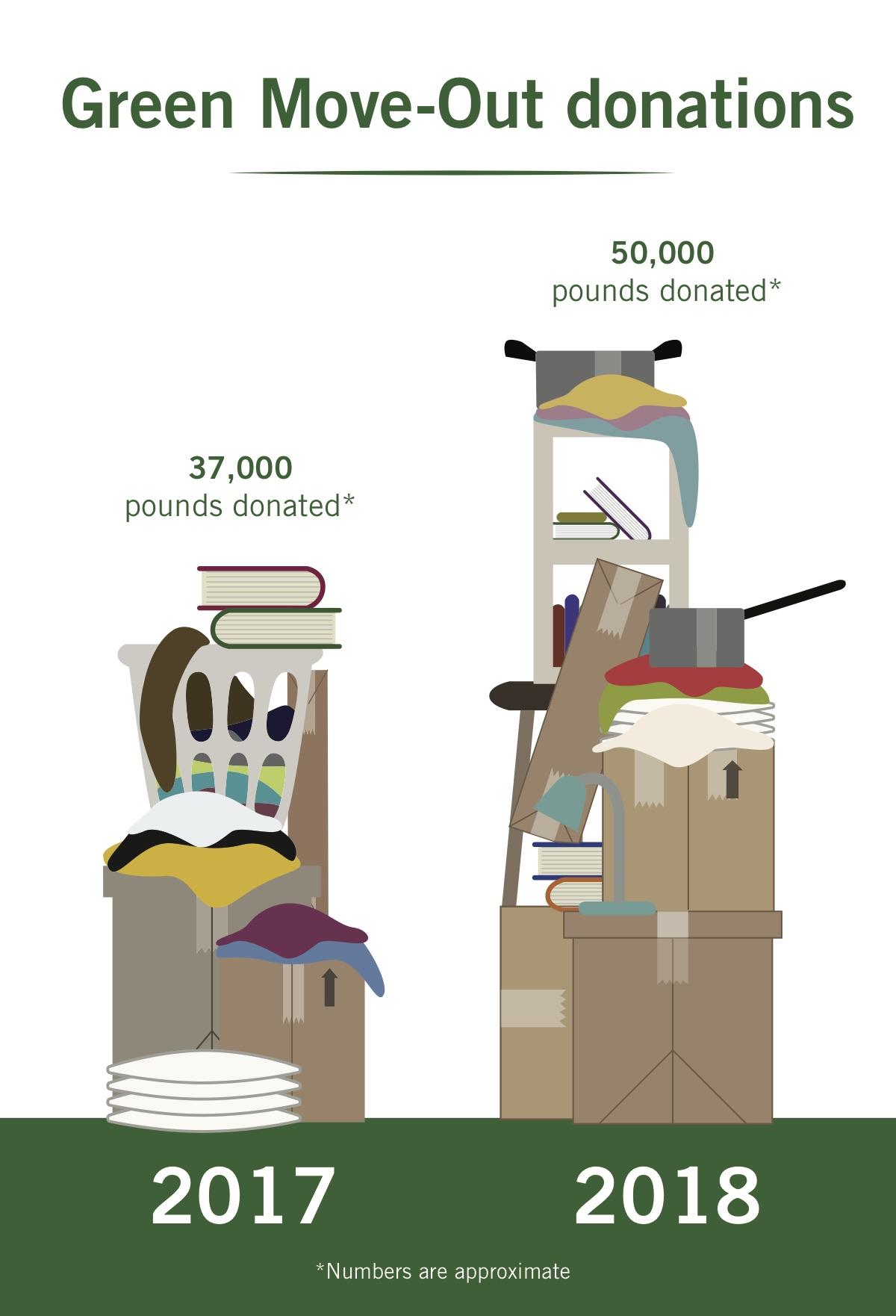
Emily Recko | Graphics Editor
Source: Campaign GW
The University’s student-led sustainable clean-out service collected a record number of donations this spring.
Students leaving their residence halls dropped off more than 50,000 pounds of donations last month for Green Move-Out, an annual food, clothing and home goods collection drive at the end of the spring semester. Officials and student leaders attributed the record collection – a more than 20 percent increase since last year – to two student organizations’ revamped social media campaigns promoting the project.
The clothes, non-perishable food items, bedding, lamps, books and other accepted donations were delivered to local charities, like GW Veterans and the Capital Area Food Bank, a D.C. food pantry.
University spokeswoman Maralee Csellar said that while there were likely many reasons for the increased number of donations this year, one of the biggest factors was the University’s partnership with Campaign GW, a student organization that advocates for sustainable living. The organization advertised the program for the first time this year, launching an Instagram campaign promoting the move-out in April, she said.
The campaign featured graphics and photos of Green Move-Out volunteers posted with captions encouraging students to participate. This year, more than 100 students volunteered to work three or more shifts, Csellar said.
She said the student group sent emails to students in each residence hall and tabled in Thurston Hall to promote the initiative. Campaign GW also partnered with the Residence Hall Association to reach a larger group of potential donors and volunteers, Csellar added.
“A key factor was Campaign GW’s increased involvement in marketing and promotion of this year’s Green Move-Out throughout April to ensure students knew that their donations are truly making a positive impact on people who are in need while also helping reduce contributions to the waste stream,” she said in an email.
Csellar said that this year, officials also improved the way donated goods were transported from residence halls to the vehicles delivering the items to the charities. Shift leaders “focused on a more efficient bagging and removal of items” from drop-off sites around campus, resulting in more space for donations in bins, she said.
Green Move-Out began in 2007 as a student-led initiative to make the move-out process more environmentally friendly. The service stockpiled upward of 3,000 pounds of donations during its initial years, but that number skyrocketed to more than 50,000 pounds this spring, according to a tweet posted after Green Move-Out tallied the number.
Colin O’Brien, the student coordinator of Campaign GW, said the organization relied on email and social media platforms like Instagram and Facebook to promote the initiative, where the group posted photos of volunteers to spread awareness about the clean-out.
“Having Campaign GW involved in Green Move-Out this year proved to be very successful for raising awareness about the program and gathering a substantial increase in donations,” O’Brien said in an email.
RHA President SJ Matthews said her organization’s partnership with Campaign GW helped ensure the success of the move-out this year because the two groups worked together to advertise the program to a wider audience. The RHA used its social media accounts and residence hall council meetings to promote Green Move-Out, she said.
“Between RHA and Campaign GW, we were able to get the word out to more people on campus, which contributed to the rise in donations,” Matthews said in an email.




